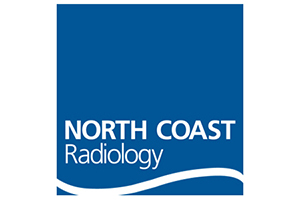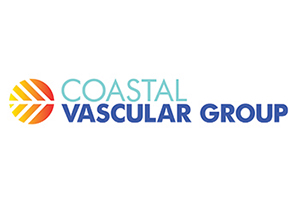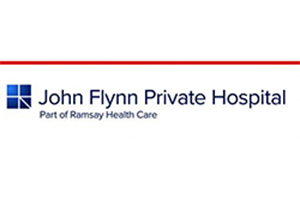Introduction
In Australia today Australian Health Practitioner Regulation Agency (AHPRA) registration and survey information reveals there are over 600,000 registered health professionals delivering services in communities across the country – approximately 345,000 nurses and midwives; 101,000 medical practitioners; and 21,000 dentists (Australian Government, 2019).
There are also over 150,000 registered allied health professionals (AHPs) delivering a wide scope of services across health, education and community sectors. In addition, there are an unknown number of allied health practitioners from unregulated professions (e.g. dietetics/nutrition, speech therapy) that would take the national AHP figure up around 200,000.
Although we do not have accurate local workforce data, it can be estimated there are 3,000 – 4,000 allied health professionals qualified to practice on the NSW North Coast. Previous work by the North Coast Primary Health Network (in 2017) noted that at least 2,500 AHPs working in the region, a high percentage in private practices. However, this is likely to be a conservative estimate.
These figures indicate that AHPs represent a significant component of the health workforce in our region. The large numbers of AHP businesses and NGOs providing services in the primary care sector are also significant. It therefore stands to reason that the overall engagement of AHPs with the general practice sector needs to be of high quality and efficient, given the centrality of GPs to primary care in the Australian context. Although there are clearly many excellent relationships between individual AHP businesses and GP practices across the region, and these synergies are producing high quality engagement for integrated care, there would appear to be more general barriers to optimal communication that need to be looked at and resolved. This article focuses on these issues.
Allied Health Vision for the North Coast
The vision of the North Coast Allied Health Association for the North Coast community is based on the following core aspirations:
- Integrated Multi-disciplinary Care: North Coast health services are well-integrated in order to provide effective, multi-disciplinary and cross sector responses to meet the needs of regional communities
- Patient-centred Care: All health services are patient-centred and prioritise the issues and needs of patients over professional needs (this is not to discount professional needs)
- Agreed Clinical Pathways: There are clear clinical and service pathways for North Coast health service consumers based on agreed best practice for a multi-disciplinary and multi-sector primary care environment
- Prioritising unmet needs: Unmet needs for health services within the broader community and for particular North Coast communities are clearly identified and prioritised for action by health agencies and managements across the region.
- Team-based professional development: Along with discipline-specific professional development, multi-disciplinary team-based professional development for providers on the North Coast is focused on matching the identified priority challenges in health care
- Collaborative planning and research: There are many and varied opportunities for collaboration across the health care professions and with the public in order to undertake health planning and research attuned to the needs of the North Coast community
Current barriers to Integrated, Patient-centred Primary Care
“Health care on the North Coast continues to be plagued by many of the health disciplines continuing to work in relative isolation from each other…”
The current state of play with each of these aspirational elements for best healthcare is mixed.
Integrated multi-disciplinary care remains a fundamental challenge. Health care on the North Coast continues to be plagued by many of the health disciplines continuing to work in relative isolation from each other, often on the basis of different funding sources and management structures for the conduct of their health practice.
This is not patient-centred care. Patient-centred care would require that professional and sector barriers be significantly addressed to produce coherent and connected health care, particularly for those with complex or chronic conditions.
One area of particular concern for AHPs has been the limited inclusion of allied health in the development of the My Health Record system – how can we have effective integrated care when health professionals cannot efficiently and effectively communicate with each other regarding their shared clients?
This basic shortcoming must be sheeted home to the Commonwealth, which has ultimate responsibility to the population for the whole of the Australian healthcare system. Simply put, it has not effectively embraced its responsibilities to the allied health components of that system.
As discussed above, ambitions for patient-centred care are compromised on the North Coast. Although individual practices and practitioners may adopt patient-centred approaches as best they can with a high degree of care and concern for their patients, the system as a whole is not conducive to building its services around the consumer.
Regarding best-practice clinical and healthcare pathways, significant work has been done by NSW Health in defining and implementing such pathways, and by the general practice sector for elaborating such pathways for GPs. However, not enough has been done on the North Coast, or nationally, to determine best pathways for multi-disciplinary health teams working in integrated primary health care, or for transition between hospital and community settings.
Patient-centred care requires that effective health services and providers are sensibly arrayed around the complex needs of clients, not to suit particular professional interests and convenience. Clinical pathways have been elaborated elsewhere for various allied health professions, but the challenge for health providers – allied health, medical and nursing – is to work out how we can all work best together for the client, and to define and implement these team-based pathways.
To our collective discomfort, there are significant unmet needs for health services in particular North Coast communities. Deficits are seen in the health response for Aboriginal communities where, as obvious examples, the rates of low birth weight, infant mortality and renal failure in Indigenous adults remain unacceptably high (HealthStats NSW).
No one could suggest that solutions to these health challenges are straight-forward, but nor could it be claimed that the health sector is performing adequately to resolve them. With particular reference to needs related to allied health care, our Association is aware of limited access to AHPs for people who choose health care in Aboriginal community-controlled health services, or lack capacity to pay for services.
A further example in the broader community is a lack of community-based rehabilitation services for stroke or head injury sufferers once they have completed their acute rehabilitation programs. People who lack financial resources are unable to purchase these services - despite there being adequate numbers of private AHP providers in the region - and as a result they are achieving sub-optimal rehabilitation outcomes at great cost to themselves and the community.
In recent years, efforts have been made to improve the development and provision of multidisciplinary professional development (PD) to support team-based approaches. Healthy North Coast (i.e. the North Coast Primary Health Network) ensures that many of its PD offerings cater for a multi-disciplinary audience, and much training offered by the Local Health Districts is multidisciplinary in nature. However, the range and quality of the training requires a focus of attention and far greater collaboration between North Coast health agencies to ensure our health teams are working together efficiently with the patient at the centre of their attention.
We do note the recent demise of the Cape Institute – its efforts to provide multi-disciplinary training and to meet allied health PD needs were on point.
Given that each health discipline brings unique skills and expertise to bear on a patient’s health situation, and given that most of our clients require the skills of at least two or more health professions for optimal care, then it follows that healthcare planning and research endeavours on the North Coast should often be multi-professional in nature.
This not to deny the need for discipline-specific planning and projects, nor that there is not multidisciplinary activity already being undertaken. However, a positive future will have, as a basis, far greater professional collaboration, investigation and innovation in the health field. In this regard, the University Centre for Rural Health on the North Coast, and the university resources across the whole North Coast footprint, will have a key role to play.
Stakeholder Benefits from Health Care Improvements
With progressive action in each of the aspirational elements described above, a range of stakeholders are likely to benefit. With greater emphasis on multi-disciplinary care, clearer team-based clinical pathways, team-based professional development opportunities, and collaborative health planning and research, we are likely to see improved recruitment of AHPs to the region and more substantive AHP workforce retention and career development.
Consequently, we would anticipate closer and more productive engagement between AHPs and GPs in the world of primary care, as each professional group develops more knowledge of the other, and more confidence to work together for better health care.
Finally, and most importantly, the community is likely to benefit from a stronger, more engaged and collaborative workforce, focused on patient-centred practice and addressing unmet needs, and being supported by clearer health planning and agreed team-based approaches
The Australian Government and Allied Health
In laying out these ambitions for better health care on the North Coast, albeit through an allied health lens, it is important to note that some improvements can be mediated specifically on the North Coast, but others will require policy changes at the national level to facilitate positive impact in the regions.
The North Coast Allied Health Association believes that the Australian Government is not currently, and has not historically, fulfilled its obligation to Australians in terms of the fair and equitable provision of allied health services. To be clear, the Australian Government has ultimate responsibility for the whole of the healthcare system. If it cannot provide, or directly ensure, the necessary services to meet community needs, it must contract state and territory governments or other providers, such as GPs or NGOs, to provide these services.
Although Commonwealth Health funds the jurisdictions to provide a range of necessary allied health services, particularly in hospital settings, it provides very little assistance to private allied health providers to deliver their services (as is provided to GPs). As a consequence, private AHP businesses do best in metropolitan locations where there are sufficient people with capacity to pay. They do far less well in regional and rural areas, such as parts of the North Coast, where establishing and maintaining a viable health business becomes progressively more challenging, until we get to remote areas where allied health businesses are virtually non-existent, and allied health services essentially unavailable.
Despite recent positive developments with the appointment of the National Rural Health Commissioner, his report on the Rural Allied Health Workforce, and the creation of the Chief Allied Health Officer in the Health Department (albeit part-time), the Commonwealth must reconsider its view of allied health within the broader health system, and accordingly set up structures to ensure Australians get the services they need to maintain their health and keep them out of hospital.
Conclusion
There are great opportunities to build stronger relationships between our professions in this region. AHPs understand the importance and enormous benefits for themselves and for patient care that could accrue from enhanced multi-disciplinary practice, particularly with reference to people with complex or chronic conditions. To a significant extent, both of our professions are being held back by policy and systems that have been beyond our control, and by historical precedent, which gets in the way of genuine efforts at integrated care and patient-centred approaches. But there are exciting possibilities for us to explore in our local region.
















